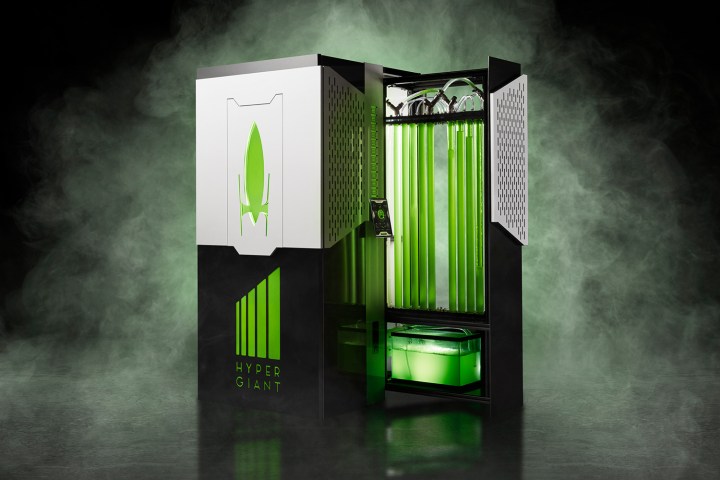
For good reason, plenty of people are worried about the quantities of carbon dioxide (CO2) that are being pumped into the atmosphere. Since the early 1800s, scientists have known that greenhouse gases in the atmosphere trap heat, causing the effect we now know as global warming. CO2 is a particularly big contributor to this problem. Created as a result of the burning of fuels like oil and natural gas, CO2 makes up the overwhelming majority of greenhouse gas emissions. It represents around 72% of the total, compared to 18% methane and 9% nitrous oxide.
The quantity of these emissions as a result of human activity has increased by more than 400% since 1950. While the effects of climate change are already seen worldwide, many experts contend that things will get worse as CO2 emissions continue to rise. Something needs to be done.
One way to slow this effect is something called biosequestration. This refers to the capture and storage of carbon dioxide using biological processes. This is an extension of photosynthesis, in which plants, such as trees, use energy from the sun to turn carbon dioxide into oxygen. Now an A.I. company from Austin, Texas, thinks that it’s come up with a way to make this process significantly more efficient — and it involves a combination of cutting-edge artificial intelligence and algae, the group of photosynthetic organisms you probably know best from making up the green, plant-like film which covers ponds and other bodies of water.
Algae is the answer
“We believe one of the biggest human challenges of our time is the current crisis with global warming,” Ben Lamm, CEO of Hypergiant Industries, told Digital Trends. “As such, we set out to figure out if trees were really the best solution or if there were other effective alternatives. It turns out that algae is actually much more effective than trees at reducing carbon in the atmosphere, and can be used to create carbon negative fuels, plastics, textiles, food, fertilizer and much more. [Our research led us to utilize] algae and A.I. to create the Eos Bioreactor, a prototype bioreactor that can substantially outperform trees by up to 400 times.”
Algae is one of nature’s most efficient machines for carbon dioxide consumption. Algae needs three key elements to grow: carbon dioxide, light, and water. As it consumes CO2, it produces biomass, which can then be processed to create materials which range from fuels, oils and fertilizers to plastics, cosmetics and even high-protein food sources. Algae can not only far exceed the efficiency of agricultural crops in terms of carbon sequestration, but it also doesn’t compete for the same arable land. That makes it a doubly good solution next to space-occupying forests.
“The device [we’ve created] is a controlled closed system model,” Lamm explained. “Every part of the growth process is tightly controlled and optimized with machine intelligence to maximize CO2 consumption. The A.I. monitors light, heat, growth, water speed, pH, CO2, oxygen output and more to ensure optimal growing conditions.”

Hypergiant isn’t the first time researchers have focused on algae as a potential game-changer for carbon sequestration. However, its new bioreactor promises not only aims to make these abilities smarter, courtesy of machine learning tech, but also to pack its solution into a disarmingly small form factor. The company’s bioreactor fits within a compact form factor measuring 3-foot by 3-foot by 7-foot. That’s small enough that it could fit within office buildings as part of a shift toward more sustainable smart city environments. The results could significantly increase the adoption of this technology.
Still early stages
Lamm stressed that this is still early stages for the project. The company has not yet announced where its solution will initially be deployed, although it has some big ambitions (think smart cities). For now, he says that he’s focused on showing that the technology can work as well as hyped. There are some big claims. But, as people often note about climate change, it’s a big problem — and that calls for big solutions. Already Hypergiant has attracted some major supporters, with the most public being vocal climate science supporter Bill Nye.
“One Eos Bioreactor sequesters the same amount of carbon from the atmosphere as an entire acre of trees,” Lamm said. “We are a technology company that makes A.I. products and solutions — but we are human first and want to create products that improve the human condition. We feel responsible for developing solutions that can help businesses and people make a real difference in their communities.”
It remains to be seen whether this turns out to be the solution that people are hoping for. Certainly, it’s not the innovative attempt to suck carbon dioxide out of the air that Digital Trends has covered. But no-one is going to complain about there being too many people trying to solve this world-defining challenge.
For the sake of humanity, let’s hope that Hypergiant Industries — and the other groups working on similar technologies — are onto a winner.


